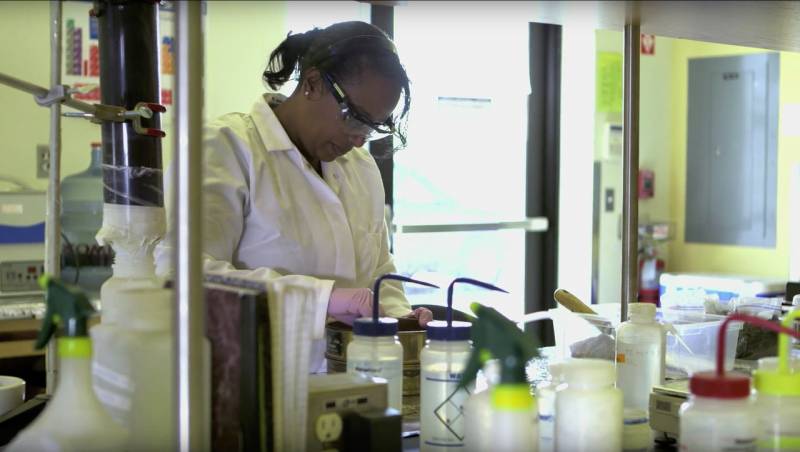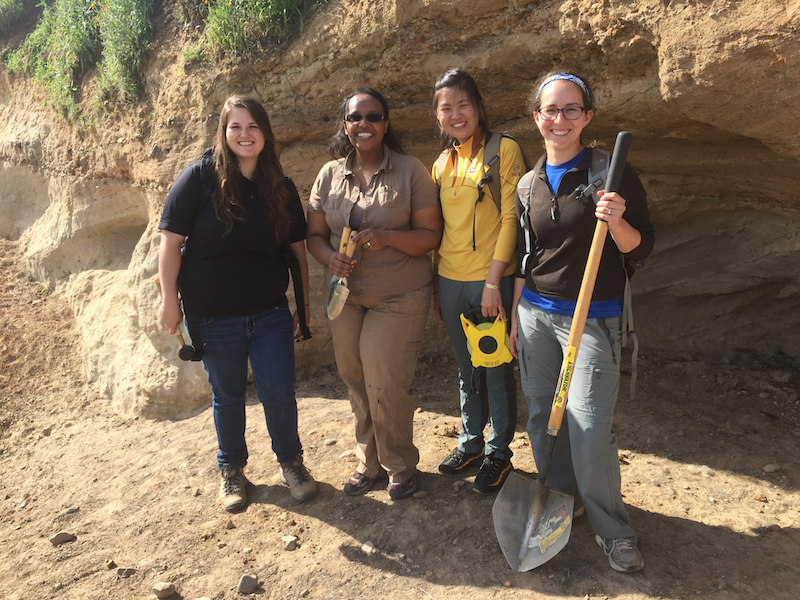Black, Latino and indigenous people are severely under-represented as learners and teachers of science, technology, engineering and math in academia. The lack of diversity has been documented for decades with little or no improvement. Minority youths experience bias, discrimination and harassment, contributing to persistent power imbalances.
As the societal reckoning over systemic racism reaches into the halls of universities, two researchers, who are heads of ecology and Earth science labs, wrote a paper with recommendations for how professors can take steps to protect their students and create a more welcoming environment.
The paper, “Ten simple rules for building an anti-racist lab,” is currently in review with PLOS Computational Biology. The authors, V. Bala Chaudhary and Asmeret Asefaw Berhe, emphasise that the list is a simple starting point and not meant to be comprehensive. KQED spoke with Berhe, who heads a research group studying soils and climate at UC Merced.
This interview has been edited for length and clarity.
What motivated you to write this paper?
Bala Chaudhary, the co-author, and I, have both been very active on Twitter around these issues for a long time. In the last few weeks, what happened with George Floyd and with Amy Cooper in New York started a lot of discussion within the academic community on Twitter and in general about what we do — how do we move forward? Society as a whole is having a reckoning with these issues.
But let’s be real, our academic institutions also face very, very similar concerns. I think the issue in New York hit a chord with Earth and environmental scientists because working outside is what we do. It’s what we’re supposed to be doing. But it’s a concern that a lot of Black, indigenous, and people of color have pointed out — how dangerous it can be for us to be out doing fieldwork. By design, the areas that we spend a lot of time in doing fieldwork don’t really have a high population. And we encounter all sorts of people that don’t have, let’s just say, the best intentions, especially when they see somebody that looks like me. They don’t even take me seriously as a scientist.
Many people that I know have come very close to danger in these kinds of encounters. This issue didn’t get the kind of attention it should until there was something so egregious it was undeniable. I think Amy Cooper pointing out the fact that he’s African American multiple times as a threat hit a chord with a lot of people. I think the message finally got across that this is real.
Bala had worked on a similar [10 simple rules] article with a group in Germany about lab management and she had this great idea. A whole lot of people seem to be willing to listen right now, but they don’t know where to start.
So — ‘10 Simple Rules’?
With the complete acknowledgement that nothing having to do with addressing racism is really simple, right? These are hard questions, hard conversations. But this 10 simple rules format is a pretty popular format for PLOS Computational Biology. And it’s also a way to get a message across for beginners.
I should say here that in academic institutions we’ve done a better job in addressing sexism and issues of women. But we have been very, very hesitant to address issues around race. There’s a lot of reluctance in acknowledging that racism even happens.
We’re geoscientists and ecologists — this is not even our expertise — but we’ve been forced to study this literature because it’s something we deal with all the time, to try and understand what’s happening to us, what’s happening to other people who look like us. We wanted to make sure we didn’t come across, as it were, saying we’re experts in this, but rather point people to the well-established scholarship in these areas and ideas that we all can embrace in making the situation better.
What’s the reception been?
This has been getting a lot of attention. As you know, there’s a lot of talk in academic institutions right now about how to address issues of racism, and Blackness, in the academy. I mean, the National Academies have come up with tons of reports on these topics over the years. Right? So we wanted to cut across all of that. Right now, with the people that you’re mentoring, in labs that you’re managing, you can do some things differently and improve the working conditions for people you have influence over.
And I’m pleasantly surprised with the kind of attention that it’s been getting and the number of people who’ve reached out to say this was in our lab group discussion, first thing. We moved everything away to go over this together with our groups and make sure that our mentees know we have their back. And yeah, that’s kind of what was the whole point.
If you had a magic wand and could choose just three rules that all labs would implement, which would they be?
The first one I’d point out was recently brought to light on Twitter by a geophysicist who was doing fieldwork and came into contact with neo-Nazis and was terrified for his life. It’s our Rule 2 — ‘Address racism in your lab and field safety guidelines.’ I’ve been a long proponent of people saying if you’re going to send people of color out into nature, into uninhabited areas, you need to figure out a way to at least make sure they have a partner. And that they have communications, a way to reach help with radio, phone or satellite phone.

